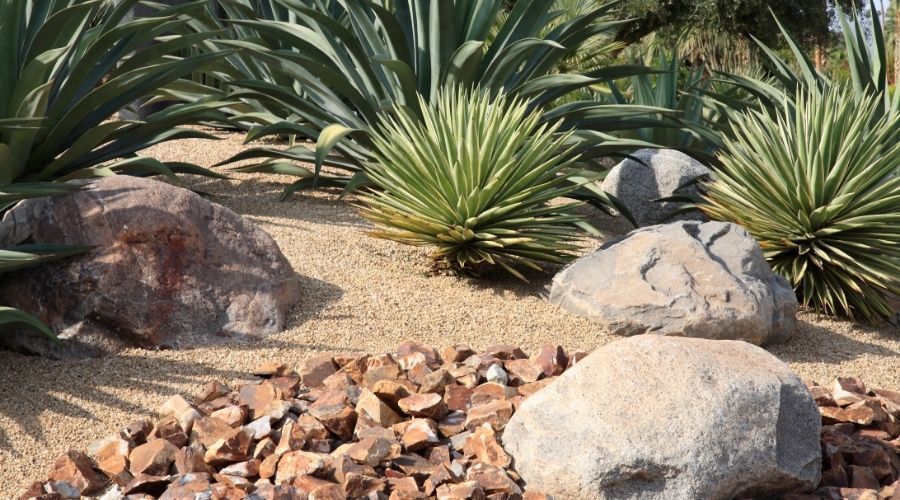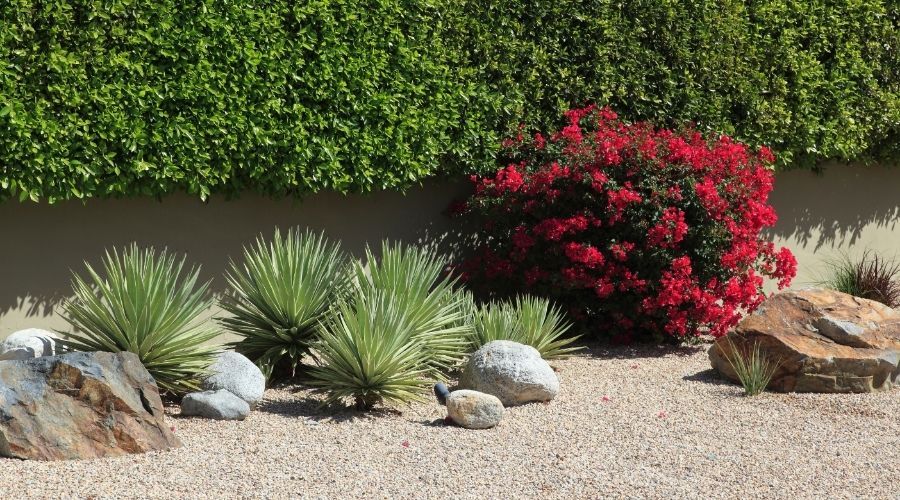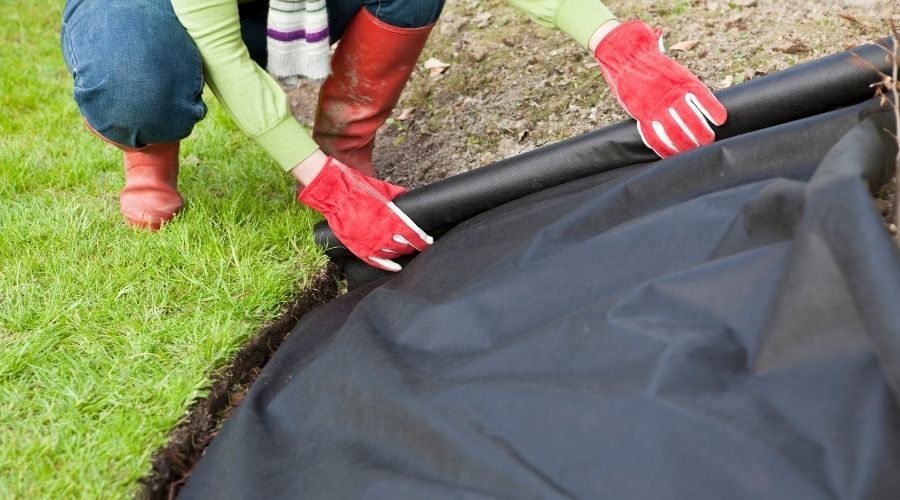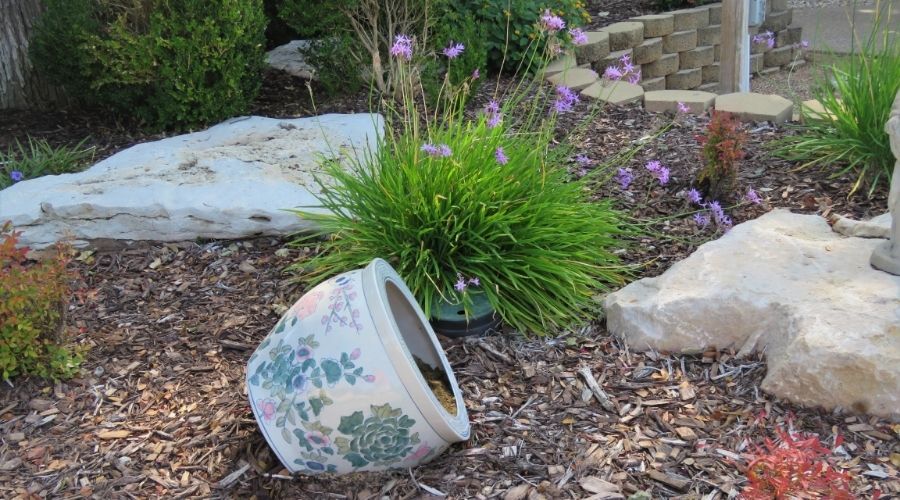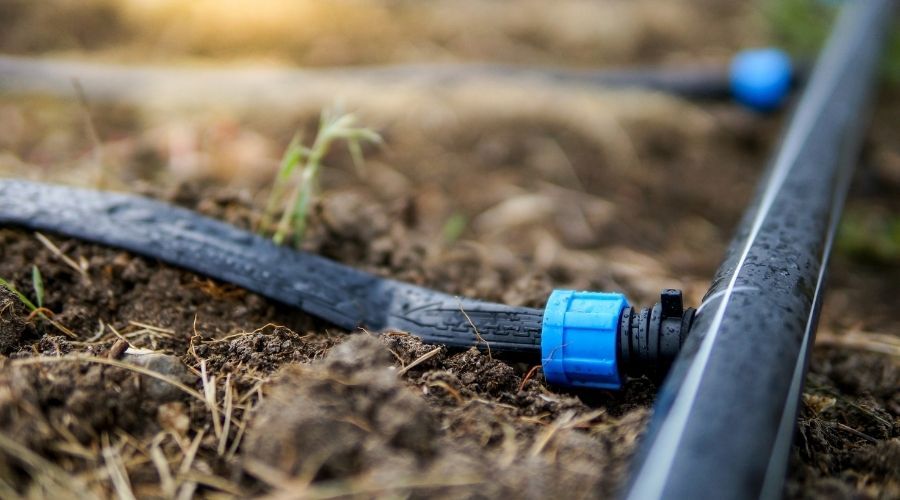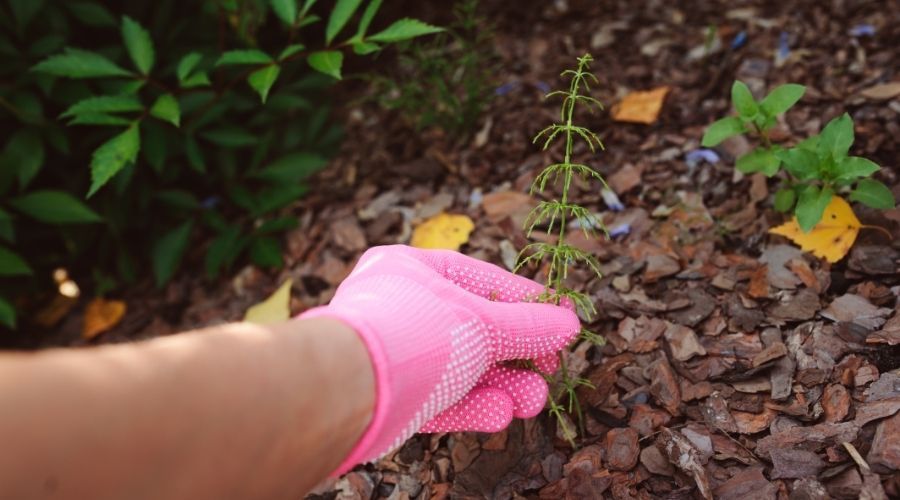Few things are more frustrating for a gardener after all their hard work to see weeds popping through, trying to take over their garden. While xeriscaping will help cut down the watering needs of your garden, it, unfortunately, doesn’t eliminate this age-old battle. Weeds are opportunistic, and they will try their best in any turf or soil type.
Whether you are in the planning process of your new xeriscape garden or currently locked in a battle of wits with your local weed population, we have put together an easy-to-follow, step-by-step guide to prevent weeds in xeriscape gardens.
You Will Need
- Weed barrier cloth
- Organic Matter/Mulch of choice
- Drip irrigation system kit
Step One: Plan Your Xeriscape Garden Strategically
Image Credit: Solidago on Canva
Every time you dig and move elements of your garden around, you are actively turning the garden soil. While this is generally a great thing for the plants you’re growing, it creates the perfect environment for the local weeds to thrive. If you take the extra time to plan out your garden before getting started, you can minimize any disturbances in the area and help to limit the problem before it starts.
There are many different ways to plan out your landscaping projects, but two of the most popular include a landscape design app like iScape or the traditional approach of paper and pencil. Take the time to map out the placement of each plant (and type of plant), locations for desired rocks and accessories, and the general shape of the garden you want to create.
It will allow you to see whether you like the overall design or need more thinking and planning before moving on to the next step.
Step Two: Use A Weed Barrier Fabric
Image Credit: cjp on Canva
Weed cloths (also known as landscaping fabrics) are meshed textiles, like burlap or black plastic, that work as a barrier to help prevent the weeds from growing through in the space. The weed barrier fabric is made from plastic, such as polypropylene or polyester. Not only does it create an efficient barricade that the weeds can’t penetrate, even if they do manage to extend their roots into the area, but it also blocks the sunlight from being able to reach the surface of the soil.
It will help to kill off any stubborn weeds that may already be trying to grow. When you have covered the space with your weed barrier fabric, cut holes for the plants you will be planting, allowing the plant roots to reach the garden beds below. This is another reason why the planning process is an important place to start, helping to avoid putting unnecessary holes in the landscape fabric that could invite weed growth.
Step Three: Add A Thick Layer of Mulch
Image Credit: Christine_Kohler on Canva
While mulch will not eliminate the chance of weeds growing in your flower beds and vegetable gardens, adding a thick layer to your garden will deprive the weeds of the sunlight that they need to thrive and grow if any have managed to make their way through the landscape fabric. For this to be effective, it is recommended that you include approximately 3 to 4 inches of mulch across the garden. Not all mulch options are created equal, and your choice of mulch can influence the amount needed for optimal growth. Organic mulch like cedar and other wood mulches can be used up to 4 inches deep without complications.
Inorganic mulch, like rocks and stones, can heat up quickly under the sun's powerful rays, causing problems if the layer is too thick. For this reason, it is recommended to stick to a slightly smaller 2 to 3-inch layer of mulch if you are using these options. Experts also recommend avoiding putting rocks directly around the base of your plants as the additional heat can dry up much-needed moisture in that area, creating problems even for deep root systems.
Step Four: Install a Drip Irrigation System
Image Credit: Peppersmint on Canva
A drip irrigation system is a watering system that uses a series of pipes or driplines, delivering water directly to the root system each time that it’s turned on. It is done through a series of adjustable nozzles, ensuring that each plant is receiving the amount of water that it needs to thrive without providing it with more or less due to other plants in the area. Timers can also be installed to water your plants every day, even if you’re not home.
In terms of weed control, this works by restricting the amount of water that will find its way to any weeds trying to germinate or grow in the area. Without the excess water covering the rest of the ground between plants, you are avoiding watering the weeds and encouraging their growth further.
Step Five: Address Any Weeds ASAP
Image Credit: Mkovalevskaya on Canva
If you notice that weeds are starting to poke through in your garden, don’t wait to deal with them. The longer that the visible weeds are allowed to grow, the stronger their root system will become and the more difficult it will be to effectively remove them from the space. Hand-pulling weeds may feel tedious, but it will make a significant impact long term.
It will also ensure that the weeds are removed before they have the opportunity to go to seed, spreading thousands of weed seeds around your garden and your yard as a whole, creating an even larger problem.
Careful Planning and Quick Actions Can Save Your Garden from Weeds
There is no magic solution to prevent all weed growth with the snap of a finger. As avid gardeners ourselves, we also wish that we could say otherwise. Luckily, there are many steps that we can take to prevent weeds from being able to grow and take hold, as well as to manage any weed growth as soon as it appears. By staying vigilant in your battle against weeds, you will be able to enjoy your beautiful, weed-free xeriscape garden all season long.
Have you ever planted a xeriscape garden? If so, what steps did you take to help prevent and manage the growth of weeds in the area? We'd love to hear all about your experience in the comment section below!

